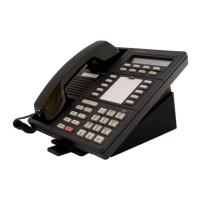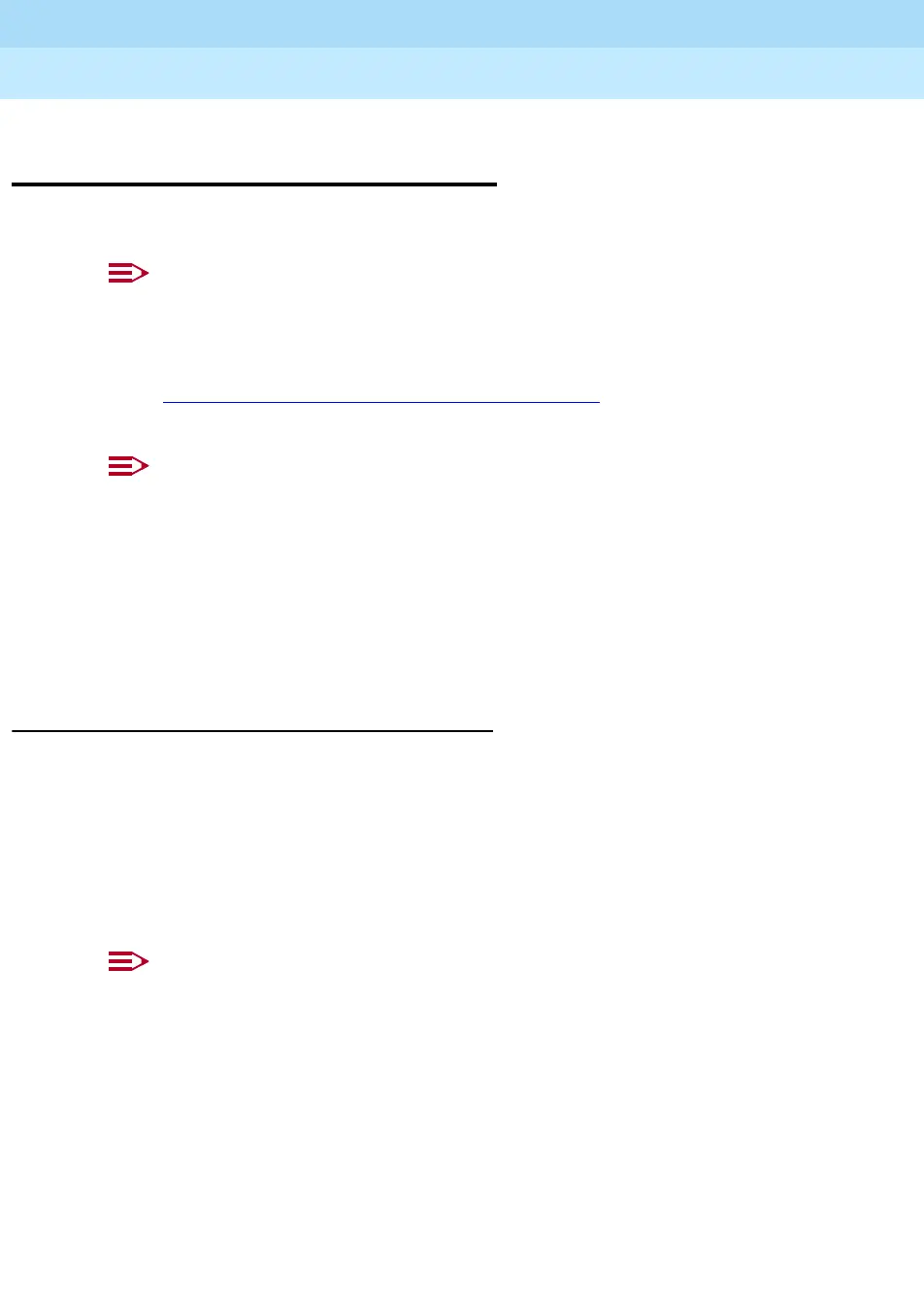MERLIN LEGEND Communications System Release 6.1
System Manager’s Guide
555-661-118
Issue 1
August 1998
Managing the System
Page 6-75Changing Group Coverage Assignments
6
Changing Group
Coverage Assignments 6
Use this procedure to assign or remove an extension from a coverage group.
NOTE:
In Release 4.1 and later systems, you can change, on an extension-by-
extension basis, the number of rings at a sender’s extension before a call is
sent to Group Coverage receivers. For programming information, see
Chapter 3, “Programming Procedures,” in
System Programming
and
“Changing Coverage Delay Options” on page 6–49
.
NOTE:
In Release 6.1 and later systems, a calling group on one MERLIN
LEGEND system can provide coverage for extensions to another MERLIN
LEGEND system. In addition, the voice messaging system on one MERLIN
LEGEND system can be shared by other MERLIN LEGEND systems. This
is called “Centralized Voice Messaging.” For this coverage and for
Centralized Voice Messaging, the systems must be directly connected by
tie or PRI tandem trunks, and all systems must be in Hybrid/PBX mode.
See the
Network Reference
for details.
Planning Guidelines 6
Changing Group Coverage assignments can affect other features, including
Account Code Entry, Auto Answer All, Auto Answer Intercom, Automatic Line
Selection, Barge-In, Callback, calling restrictions, Call Waiting, Camp-On,
Conference, Direct Station Selector, Do Not Disturb, Forward and Follow Me,
Group Calling, Hold, Park, personal lines, Pickup, pools, Recall, Reminder
Service, Ringing Options, SMDR, System Access/Intercom Buttons, Transfer, and
Voice Announce to Busy. For more information, see the
Feature Reference
.
NOTE:
This procedure assigns
senders
. Before you begin, make certain that the
receivers
for the coverage groups are assigned through extension or
centralized telephone programming.
A maximum of 30 coverage groups is allowed, each with an unlimited number of
members. Up to eight receivers can be assigned per coverage group.
An extension can be a sender in only one group; it can be a receiver for more than
one coverage group. A calling group can be assigned as a receiver for up to 30
coverage groups. In Hybrid/PBX mode only, the QCC queue can be a receiver for
up to 30 coverage groups.

